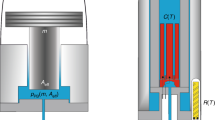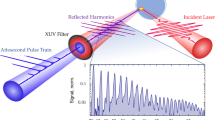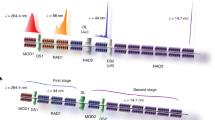Abstract
SOME experiments awaiting publication show how remarkably easy it is to start high-frequency electrodeless discharges at pressures of the order of 1/100 or even 1/1,000 mm. of mercury in a uniform electric field. For a bulb of given size, the wave-lengths must be less than a certain value which is directly proportional to the diameter of the bulb. A rough working rule is that the maximum permissible wavelength (measured in metres) is four times the diameter of the bulb (measured in centimetres). If the pressure inside the bulb is increased from the above small value, this 'cut off' wave-length is also increased, and at a still higher pressure the 'cut off' disappears. At wave-lengths beyond the 'cut off' enormous voltages are required to get a discharge—if one can begot at all. The discharge starts most easily for wavelengths from about one half to three quarters of the 'cut off' wave-length.
This is a preview of subscription content, access via your institution
Access options
Subscribe to this journal
Receive 51 print issues and online access
$199.00 per year
only $3.90 per issue
Buy this article
- Purchase on Springer Link
- Instant access to full article PDF
Prices may be subject to local taxes which are calculated during checkout
Similar content being viewed by others

References
Bruining, H., "Sekundiirelektronen-Emission fester Körper" (Berlin: Springer-Verlag, 1942).
Author information
Authors and Affiliations
Rights and permissions
About this article
Cite this article
GILL, E., VON ENGEL, A. Low-Pressure Electrical Discharges. Nature 159, 404–405 (1947). https://doi.org/10.1038/159404a0
Issue Date:
DOI: https://doi.org/10.1038/159404a0
Comments
By submitting a comment you agree to abide by our Terms and Community Guidelines. If you find something abusive or that does not comply with our terms or guidelines please flag it as inappropriate.


